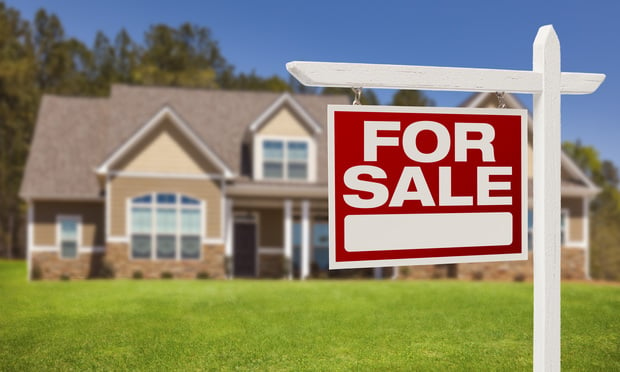
NEW YORK CITY—Although the eight-year bull market in the US lodging industry is showing signs of deceleration, the sector posted record performance metrics on a national level during 2016 including: 65.5 percent occupancy, $124 average daily rate, $81 revenue per available room, 1.8 billion available room nights, 1.2 billion occupied room nights, and $149 billion in rooms revenue. Q1 2017 compared with Q1 2016 indicates a continued increase in every major category of measurement. Although US Gross Domestic Product (GDP) growth remains muted, anticipated legislation relating to tax reform and infrastructure spending should accelerate GDP and positively impact demand for transient lodging. Additionally, the current US Presidential administration's pro-business policies are seemingly beneficial for the sector.
The LW Hospitality Advisors (LWHA) Q2 2017 Major US Hotel Sales Survey includes 39 single asset sale transactions over $10 million, none of which are part of a portfolio. These transactions totaled roughly $2.8 billion, and included approximately 11,600 hotel rooms with an average sale price per room of $244,000. By comparison, the LWHA Q2 2016 Major US Hotel Sales Survey identified 50 transactions totaling roughly $4.7 billion including 13,400 hotel rooms with an average sale price per room of nearly $350,000. With ten major Q2 2017 hotel sales, California has been by far the most active transaction market followed by Florida with nine trades. Atlanta, GA, and San Jose, CA, are also active hotel sale transaction metropolitan markets with four and three respective major Q2 2017 sale transactions.
Based on our research, hotel sale prices peaked during 2015 and with uncertainty leading up to the November 2016 US Presidential election, values remained flat at best and at worst declined by as much as 20 percent in certain markets. A surge of enthusiasm that occurred during the last two months of the year and through Q1 2017 has since subsided, and currently hotel prices remain at best flat and at worst 10 percent off the most recent peak.
Currently, the volume of sale transactions is moving at a slow pace as on many occasions refinancing by existing owners is more persuasive than disposing of assets. Furthermore, the continuation of short term interest rates near historic lows, even with recent increases by the Federal Reserve, exerts downward pressure on sales volume. There continues to be very healthy demand for hotel asset acquisition opportunities from a broad range of sectors including domestic and foreign institutional and high-net-worth investors, REITs, and family offices. Negative interest rates in numerous developed markets throughout the world has oriented overseas capital to attractive returns offered by investment in US real estate, particularly hotels.
While growth headwinds are challenging, hotel real estate valuations remain robust given a deep and broad buyer pool which positions the asset sales market to favor sellers. Relatively conservative lending endures, driven by equity contribution requirements of no less than 30 percent of transaction prices. With significant skin in the game, borrowers are carefully considering potential acquisitions and sellers are holding firm on pricing. A resultant capital markets stalemate has limited transaction activity resulting in a highly disciplined market. History has proven that at a market basis, patient money invested in US transient lodging provides compelling risk adjusted returns.

The LW Hospitality Advisors (LWHA) Q2 2017 Major US Hotel Sales Survey includes 39 single asset sale transactions over $10 million, none of which are part of a portfolio. These transactions totaled roughly $2.8 billion, and included approximately 11,600 hotel rooms with an average sale price per room of $244,000. By comparison, the LWHA Q2 2016 Major US Hotel Sales Survey identified 50 transactions totaling roughly $4.7 billion including 13,400 hotel rooms with an average sale price per room of nearly $350,000. With ten major Q2 2017 hotel sales, California has been by far the most active transaction market followed by Florida with nine trades. Atlanta, GA, and San Jose, CA, are also active hotel sale transaction metropolitan markets with four and three respective major Q2 2017 sale transactions.
Based on our research, hotel sale prices peaked during 2015 and with uncertainty leading up to the November 2016 US Presidential election, values remained flat at best and at worst declined by as much as 20 percent in certain markets. A surge of enthusiasm that occurred during the last two months of the year and through Q1 2017 has since subsided, and currently hotel prices remain at best flat and at worst 10 percent off the most recent peak.
Currently, the volume of sale transactions is moving at a slow pace as on many occasions refinancing by existing owners is more persuasive than disposing of assets. Furthermore, the continuation of short term interest rates near historic lows, even with recent increases by the Federal Reserve, exerts downward pressure on sales volume. There continues to be very healthy demand for hotel asset acquisition opportunities from a broad range of sectors including domestic and foreign institutional and high-net-worth investors, REITs, and family offices. Negative interest rates in numerous developed markets throughout the world has oriented overseas capital to attractive returns offered by investment in US real estate, particularly hotels.
While growth headwinds are challenging, hotel real estate valuations remain robust given a deep and broad buyer pool which positions the asset sales market to favor sellers. Relatively conservative lending endures, driven by equity contribution requirements of no less than 30 percent of transaction prices. With significant skin in the game, borrowers are carefully considering potential acquisitions and sellers are holding firm on pricing. A resultant capital markets stalemate has limited transaction activity resulting in a highly disciplined market. History has proven that at a market basis, patient money invested in US transient lodging provides compelling risk adjusted returns.
Want to continue reading?
Become a Free ALM Digital Reader.
Once you are an ALM Digital Member, you’ll receive:
- Breaking commercial real estate news and analysis, on-site and via our newsletters and custom alerts
- Educational webcasts, white papers, and ebooks from industry thought leaders
- Critical coverage of the property casualty insurance and financial advisory markets on our other ALM sites, PropertyCasualty360 and ThinkAdvisor
Already have an account? Sign In Now
*May exclude premium content© 2025 ALM Global, LLC, All Rights Reserved. Request academic re-use from www.copyright.com. All other uses, submit a request to [email protected]. For more information visit Asset & Logo Licensing.








